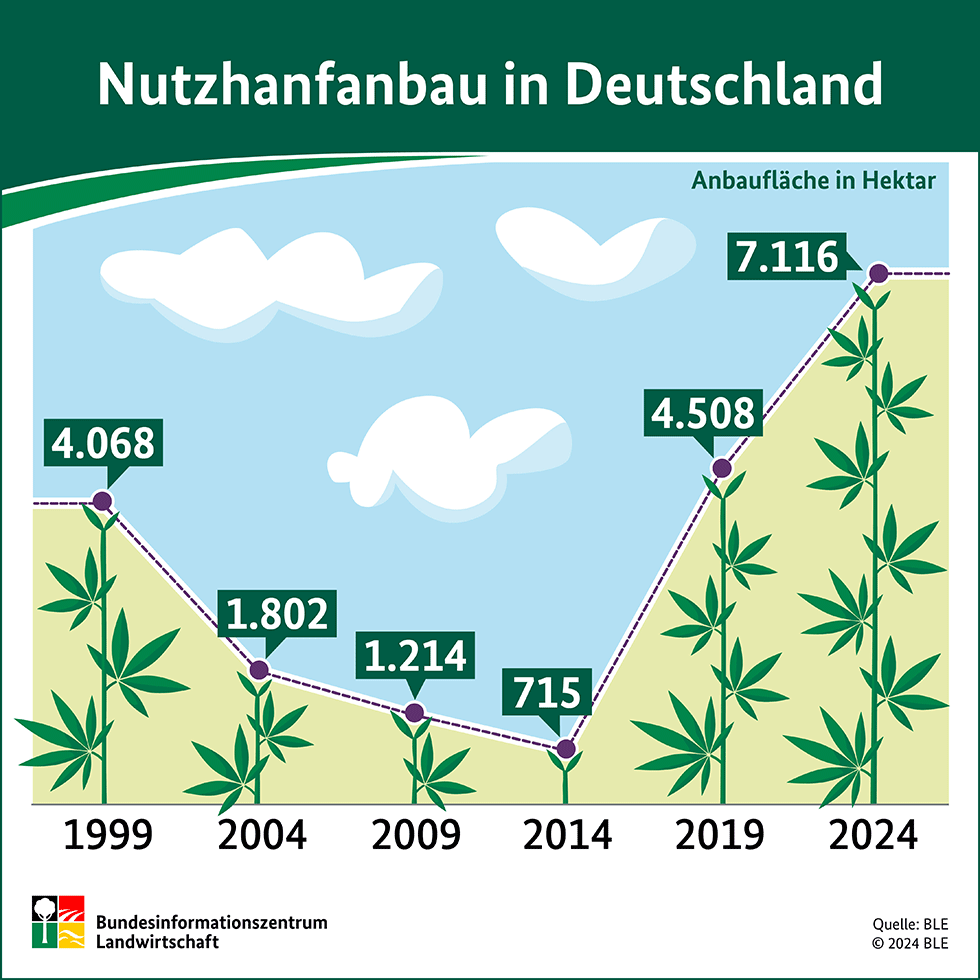Germany’s industrial hemp cultivation reaches record high
With a record cultivation area in 2024, the industrial hemp sector in Germany is experiencing an ongoing upswing. According to the latest data from the Federal Office for Agriculture and Food (BLE), 7,116 hectares of land are now being used for hemp cultivation.

Germany’s industrial hemp sector is experiencing a resurgence, with cultivated land reaching a record high in 2024. According to the latest data from the Federal Office for Agriculture and Food (BLE), 7,116 hectares of land are now dedicated to hemp cultivation—an increase of 1,282 hectares compared to the previous year. This represents a 2.5 percent rise over the previous peak in 2022.
Despite this expansion, the number of farms involved in hemp cultivation has dropped, with 40 fewer farms cultivating the crop this year, leaving 623 farmers managing an ever-increasing share of land.

While the expansion is good news for the sector, it highlights a growing divide: Fewer farmers are cultivating more hemp, and the challenge remains for the government to make hemp cultivation more attractive and accessible to smaller or newer entrants into the market.
The largest hemp cultivation areas are concentrated in Niedersachsen, Brandenburg, and Sachsen-Anhalt, with these regions accounting for a significant portion of Germany’s total production. Niedersachsen leads the country with 1,771 hectares, followed by Brandenburg at 1,477 hectares and Sachsen-Anhalt with 1,046 hectares. On average, each of the 623 remaining farms cultivates over 11 hectares of hemp, with some regions averaging much higher. For example, the average hemp farm in Brandenburg grows 38 hectares of the crop, while farms in Sachsen-Anhalt and Thüringen manage 32 and 22 hectares, respectively.

A crop with growing appeal
Hemp, an incredibly versatile crop, can be used in everything from textiles and food to cosmetics and construction materials. Industrial hemp varieties, which contain less than 0.3 percent THC, are legal to cultivate in the European Union, and in Germany, farmers have been permitted to grow approved varieties since 1996. Also the crop’s environmental benefits have made it increasingly attractive. Hemp requires minimal pesticide use, improves soil quality, and supports biodiversity, making it a sustainable option for farmers.

Yet, despite these advantages, the number of hemp farms is declining. The Ministry of Agriculture aims to reverse this trend by expanding cultivation opportunities and providing greater legal certainty. With the Industrial Hemp Liberalisation Act (Nutzhanfliberalisierungsgesetz-NLG) the German cabinet seeks to reduce barriers for farmers by expanding hemp cultivation possibilities and removing regulatory ambiguities.

Conclusion
Germany’s hemp industry is at a crossroads. On one hand, the increase in cultivated land and the government’s efforts to support the sector are positive signs for the future. On the other hand, the decrease in the number of farms highlights the challenges that remain for smaller producers.

As the government moves forward with legislative reforms aimed at providing more legal clarity and expanding cultivation opportunities, the sector could continue to grow, potentially attracting more farmers back into the fold. For now, the focus remains on making hemp an attractive and viable crop for the future — both economically and environmentally.


